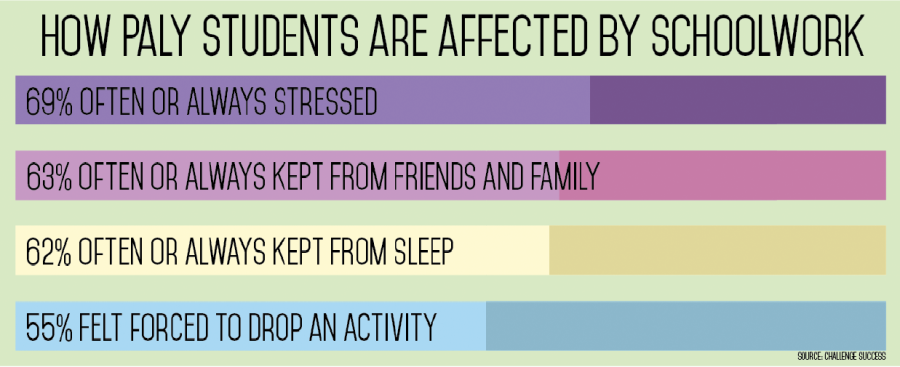Palo Alto High School’s Challenge Success team is sharing findings from the Stanford Survey of Adolescent School Experiences with students and parents in order to facilitate discussion of current administrative policies as a means of highlighting areas wherein the school can improve.
Earlier in the semester, students took the Challenge Success survey to measure and provide information on students’ perspectives on homework, extracurricular activities, sleep, physical health, stress, parental expectations, academic engagement, academic integrity and teacher support.
“The goal was to share out the information that was collected through the survey with the students, clarify questions and also start the discussion about what conclusions we can draw and what we should do as we move forward,” School Climate Teacher on Special Assignment Eric Bloom said.
The meetings were advertised on InFocus and Schoology; however, the first meeting on Dec. 1 only had an attendance of three students.
Principal Kim Diorio saw the meeting as an opportunity to encourage students to share their experiences to better the school’s policies. As a result of the low turnout, the administration hosted a second meeting on Dec. 8, to try to encourage more students to take part in the important discussion of finding solutions to the issues prevalent at Paly.
“It is a second dip at the well [or a second chance for students to show up], because it is not easy for people to find out about the event, so not that many kids came,” Bloom said. “It is hard to get student opinion, because students are busy during the day.”
Among the findings are statistics on student engagement. The survey found that 41 percent of students “do school,” or often work hard, but rarely find their schoolwork interesting, fun or valuable. Out of the entire school, only 18 percent of the students reported “full engagement.” English teacher Erin Angell said that she sees greater student involvement in her Social Justice Pathway classes than in her traditional English classes.
“In my classes outside of the Social Justice Pathway, my students less often approach me about what they would like to see in the class,” Angell said. “All of my students are prepared if I asked them, but fewer students in my classes outside of the pathway will approach me to make suggestions about bringing curriculum in.”
Among the changes that students believe could be effective are changing the way teachers assign homework, changing how tests are given, and creating more opportunities to do homework. Bloom agrees that the school needs to engage in dialogues to discuss how to move forward.
“I think giving students more time to do homework could be huge, but would take a huge cultural shift to implement,” Bloom said. “Sixty-eight percent of kids are saying this change could be quite effective or very effective. There are not 68 percent of kids in my current classes that actually do my work when I give them class time.”
During the meetings, students focused mostly on the lack of sleep and the issues that students face when they have conflicting obligations and are not granted extensions. The students that attended also commented on the laning systems currently in place, and the negative connotations that come with dropping down a lane.

